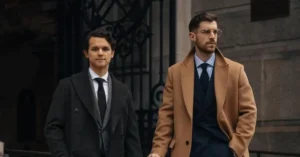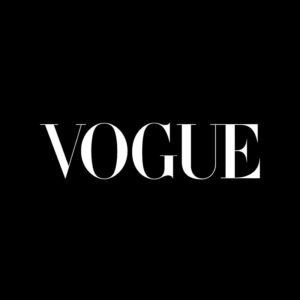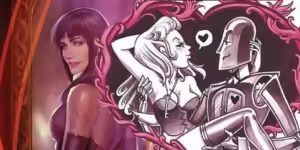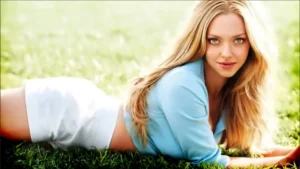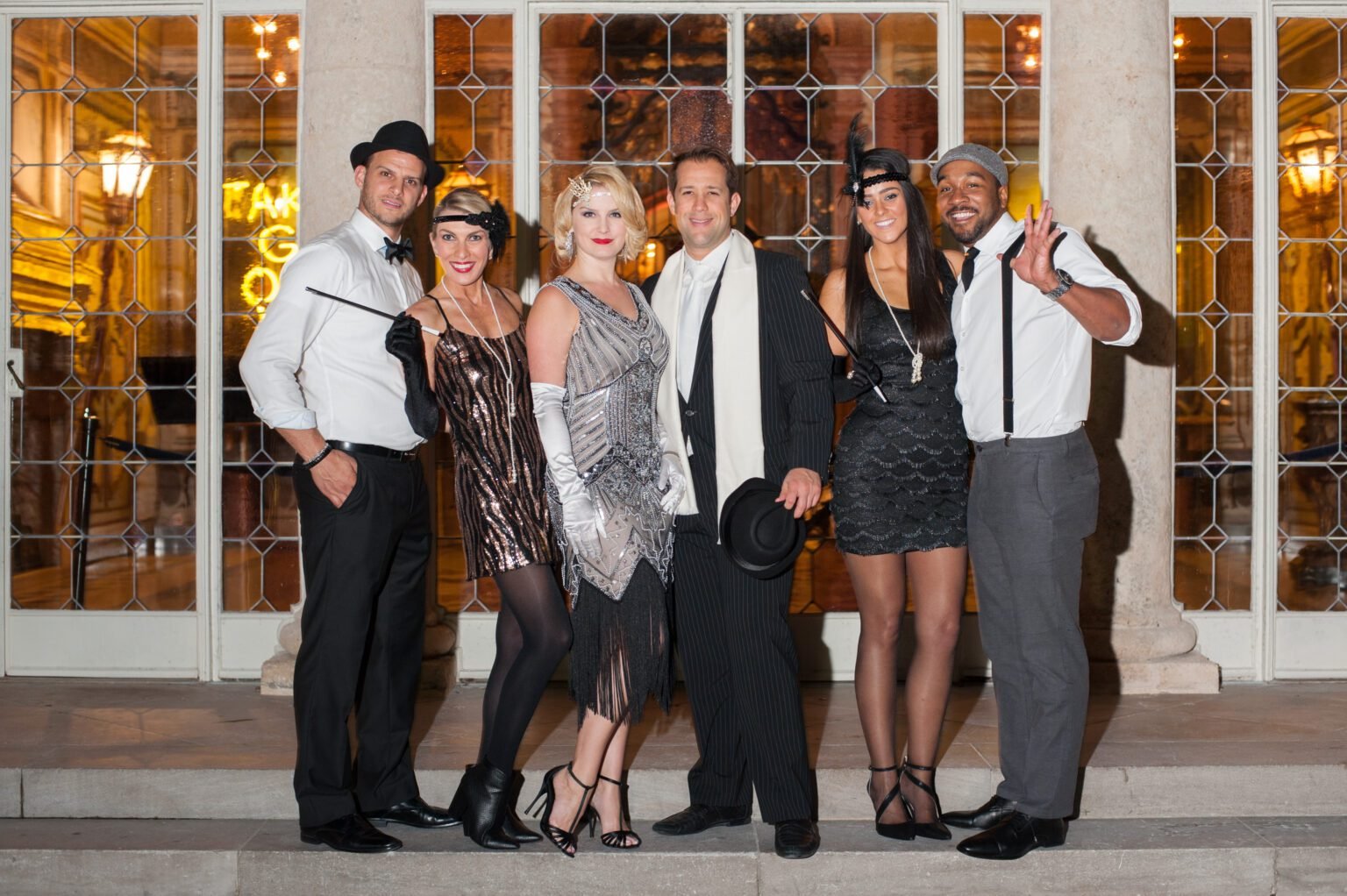
1920s Fashion Dresses Trends
Introduction
The 1920s fashion , often referred to as the Roaring Twenties, was a decade of dramatic social and cultural change, and fashion was at the forefront of this transformation. Women’s fashion, in particular, underwent a significant evolution, with dresses becoming a symbol of newfound freedom and modernity. The era’s fashion trends were heavily influenced by the flapper movement, which embraced a more relaxed and androgynous style compared to the restrictive clothing of previous decades.
One of the most iconic trends of the 1920s was the flapper dress, characterized by its loose fit, dropped waistline, and knee-length hem. These dresses often featured intricate beadwork, sequins, and fringe, making them perfect for the energetic dances of the time, such as the Charleston. The use of luxurious fabrics like silk and satin added to the glamor of the era.
Art Deco, with its bold geometric patterns and rich colors, also played a significant role in shaping 1920s fashion. This influence was evident in the design of evening gowns and day dresses alike. Accessories such as cloche hats, long pearl necklaces, and feathered headbands completed the look, creating a style that was both elegant and daring. The 1920s fashion trends continue to inspire designers today, reflecting the timeless appeal of this transformative decade.
The Rise of Flapper Dresses in the 1920s
The 1920s marked a revolutionary era in fashion, epitomized by the rise of flapper dresses. These dresses symbolized a dramatic shift from the restrictive, formal attire of previous decades to a more liberated and expressive style. Flapper dresses were characterized by their loose, straight silhouettes, dropped waistlines, and shorter hemlines, often adorned with fringe, beads, and sequins. This new style was not just about fashion; it was a reflection of the changing social dynamics and the newfound independence of women. The end of World War I brought significant societal changes, including the passage of the 19th Amendment in the United States, granting women the right to vote. Women began to embrace more active social lives, frequenting jazz clubs and speakeasies, and the flapper dress became a symbol of their rebellion against traditional norms. Designers like Coco Chanel and Jean Patou played pivotal roles in popularizing this style, emphasizing comfort and freedom of movement. The flapper dress, with its bold and carefree aesthetic, captured the spirit of the Roaring Twenties, a decade defined by economic prosperity, cultural innovation, and a break from the past. This iconic fashion trend remains a powerful symbol of women’s liberation and the vibrant energy of the 1920s.
Art Deco Influence on 1920s Fashion
The Art Deco movement had a profound influence on 1920s fashion, infusing it with a sense of modernity and elegance. Characterized by bold geometric patterns, vibrant colors, and luxurious materials, Art Deco fashion reflected the era’s fascination with progress and innovation. Designers like Jeanne Lanvin and
Paul Poiret embraced these elements, creating garments that were both stylish and functional. Lanvin’s evening dresses, for example, often featured simple, fluid forms combined with severe geometric details, capturing the essence of Art Deco’s aesthetic1. The movement’s impact extended beyond clothing to accessories and jewelry, with designers like Raymond Templar incorporating abstract, machine-inspired designs into their creations1. This period also saw a shift towards more androgynous silhouettes, as women sought greater freedom and comfort in their attire. The use of rich, textured fabrics and intricate embellishments added depth and sophistication to the otherwise minimalist design . Art Deco’s influence was not limited to fashion; it permeated various aspects of culture, including architecture, interior design, and visual arts, creating a cohesive and distinctive style that defined the Roaring Twenties This fusion of art and fashion continues to inspire designers today, highlighting the timeless appeal of the Art Deco movement.
1920s Fashion: The Drop Waist Dress
The drop waist dress emerged as a defining fashion trend of the 1920s, symbolizing the era’s break from traditional, restrictive clothing. Characterized by a waistline that fell below the natural waist, often around the hips, this style created a straight, boyish silhouette that was both liberating and chic. The drop waist dress was a staple of the flapper wardrobe, reflecting the newfound freedom and social mobility of women during the Roaring Twenties. Designers like Coco Chanel popularized this look, emphasizing simplicity and comfort over the elaborate and constricting fashions of the past1. The dress often featured lightweight fabrics such as silk, chiffon, and jersey, which enhanced its fluidity and ease of movement. Embellishments like beads, sequins, and embroidery added a touch of glamor, making the drop waist dress suitable for both casual and evening wear. This style was not just a fashion statement but a cultural one, representing women’s desire for greater independence and a rejection of the rigid gender norms of the Victorian era. The drop waist dress remains an iconic symbol of 1920s fashion, celebrated for its elegance and its role in the evolution of women’s clothing.
Beaded Dresses: A 1920s Fashion Staple
Beaded dresses were a quintessential element of 1920s fashion, epitomizing the era’s glamor and opulence. These dresses, often associated with the flapper style, featured intricate beadwork that added a dazzling effect to the garments, making them perfect for the lively social scenes of the Roaring Twenties1. The beadwork was typically done by hand, using a variety of materials such as glass, crystals, and even faux pearls, which created shimmering patterns that caught the light beautifully. Designers like Jeanne Lanvin and Coco Chanel embraced this trend, incorporating elaborate beading into their evening wear collections. The beaded dress was not only a fashion statement but also a symbol of the newfound freedom and independence of women during this period. The lightweight fabrics and loose silhouettes allowed for ease of movement, which was essential for dancing to the energetic rhythms of jazz music. The discovery of Tutankhamun’s tomb in 1922 also influenced fashion, with Egyptian motifs becoming popular in beaded designs. These dresses, with their luxurious embellishments and bold designs, remain iconic representations of 1920s fashion, reflecting the decade’s spirit of innovation and exuberance.
Fringe Dresses: The Ultimate 1920s Trend
Fringe dresses were the epitome of 1920s fashion, capturing the exuberant spirit and dynamic energy of the Roaring Twenties. These dresses, often associated with the flapper style, featured layers of fringe that swayed and shimmered with every movement, making them perfect for the lively dance floors of the era. The fringe not only added a playful and eye-catching element but also symbolized the newfound freedom and rebellion against traditional norms. Women embraced these dresses as a statement of their independence and modernity, shedding the restrictive corsets and heavy fabrics of the past. Designers like Coco Chanel and Jean Patou popularized the fringe dress, incorporating it into their collections to reflect the decade’s fascination with movement and fluidity3. The dresses were typically made from lightweight materials such as silk and chiffon, which enhanced their flowing, carefree aesthetic .The influence of jazz music and the rise of speakeasies also played a significant role in the popularity of fringe dresses, as they allowed women to dance the Charleston and other energetic dances with ease. Today, fringe dresses remain an iconic symbol of 1920s fashion, celebrated for their boldness and the sense of liberation they represented.
1920s fashion Evening Gowns: Glamour and Glitz
The 1920s, often referred to as the Roaring Twenties, was a decade marked by opulence, decadence, and a revolutionary shift in fashion. Evening gowns from this era epitomized glamor and glitz, reflecting the exuberant spirit of the time. These gowns were characterized by their luxurious fabrics, intricate beadwork, and daring designs. Women embraced sleeveless dresses that showcased bare arms, often adorned with silk shawls or fur stoles. The use of shimmering materials like silk, satin, and velvet was prevalent, with elaborate Art Deco patterns created through all-over beading1. Hemlines varied, but the trend leaned towards shorter lengths, making it easier for women to dance the night away at jazz clubs and speakeasies. Necklines were often low, with plunging backs that added a touch of sensuality. Accessories played a crucial role in completing the look, with long pearl necklaces, feathered headbands, and sparkling jewelry being popular choices. The 1920s evening gowns were not just about fashion; they were a statement of liberation and confidence, embodying the newfound freedom and boldness of women in this transformative era.
1920s Day Dresses: Casual Chic
The 1920s day dresses embodied a blend of casual chic and practicality, reflecting the evolving role of women in society. These dresses were designed for comfort and ease, suitable for various daytime activities such as running errands, visiting friends, or attending casual gatherings. The typical day dress featured a drop waist and a loose, straight silhouette, allowing for greater freedom of movement. Fabrics ranged from lightweight cotton and linen for summer to wool and jersey for cooler months .Patterns were often simple, with solid colors, small florals, or geometric prints being popular choices. Decorative elements like embroidery, pin tucks, and lace trims added a touch of elegance without being overly ornate. Hemlines varied from mid-calf to just below the knee, making these dresses practical yet stylish. Accessories such as cloche hats, gloves, and modest jewelry completed the look, emphasizing a polished yet understated elegance. The 1920s day dresses were a testament to the era’s shift towards more relaxed and functional fashion, while still maintaining a sense of style and sophistication.
The Boyish ‘Garçonne’ Look of the 1920s fashion
The boyish ‘Garçonne’ look of the 1920s was a groundbreaking fashion trend that defied traditional gender norms and embraced androgyny. This style, inspired by the French term “la garçonne,” meaning “boyish girl,” featured loose-fitting, minimalist garments that contrasted sharply with the ornate and feminine fashion of previous decades. Pioneered by designers like Coco Chanel, the look included straight, tubular dresses with dropped waists, often paired with cloche hats and bobbed haircuts. The garçonne style also incorporated elements of menswear, such as tailored suits, ties, and oxford shoes, creating a sleek and modern silhouette. This fashion movement was not just about aesthetics; it symbolized a broader cultural shift towards women’s liberation and independence. Women who adopted the garçonne look were often seen as bold and progressive, embodying the spirit of the Roaring Twenties. The style was popularized by celebrities and flappers, who embraced the freedom to dance, drink, and socialize without the constraints of traditional female attire. The garçonne look remains an iconic representation of the 1920s, reflecting the era’s dynamic blend of rebellion, innovation, and elegance.
Popular makeup trends in the 1920s
The 1920s saw a dramatic shift in makeup trends, reflecting the era’s bold and liberated spirit. One of the most iconic looks was the porcelain, matte complexion, achieved using powders and creams to create a flawless base Dark, defined lips were a staple, with shades ranging from deep reds to dark berries, often shaped into a distinctive Cupid’s bow. Eyes were equally dramatic, with kohl-rimmed eyes and smoky eyeshadows in dark hues like black, gray, and brown. Mascara, often applied in multiple layers, enhanced the lashes for a more pronounced look.
Eyebrows were kept thin and arched, contributing to the overall dramatic effect. Rouge was applied generously to the cheeks, adding a pop of color and a youthful glow. The influence of Hollywood and silent film stars played a significant role in popularizing these trends, as women sought to emulate the glamorous looks of their favorite actresses. Accessories like cloche hats and bobbed haircuts complemented the makeup, creating a cohesive and stylish appearance.
The 1920s makeup trends were not just about beauty; they symbolized a new era of freedom and self-expression for women, breaking away from the more conservative styles of the past.
1920s Fashion Icons: Setting Trends
The 1920s was a transformative decade for fashion, marked by bold experimentation and the emergence of iconic trends that continue to influence style today. Central to this revolution were fashion icons like Coco Chanel, who introduced the world to the concept of casual chic with her streamlined silhouettes and the little black dress. Chanel’s designs liberated women from the constraints of corsets, promoting comfort and elegance. Flapper girls, epitomized by figures like Clara Bow and Louise Brooks, popularized the bob haircut and knee-length dresses adorned with fringe and sequins, embodying the spirit of the Jazz Age. These styles were not just about aesthetics; they represented a shift towards greater freedom and self-expression for women. The androgynous look, characterized by loose-fitting garments and boyish cuts, was another significant trend, with actresses like Marlene Dietrich and Greta Garbo leading the way. These icons set trends that defied traditional norms and embraced modernity, making the 1920s a pivotal era in fashion history. Their influence is still seen in contemporary fashion, proving that the daring styles of the Roaring Twenties have left an indelible mark on the world of fashion.
The Role of Accessories in 1920s Fashion
Accessories played a pivotal role in defining the fashion of the 1920s, adding flair and personality to the era’s distinctive styles. Women embraced a variety of accessories to complement their outfits, with items like cloche hats, long pearl necklaces, and feather boas becoming iconic symbols of the decade. The cloche hat, snug-fitting and often adorned with ribbons or brooches, was a staple that framed the face and completed the flapper look .Jewelry, particularly long strands of pearls and Art Deco-inspired pieces, added a touch of elegance and sophistication. Evening wear was often accentuated with dramatic accessories such as beaded handbags, feather fans, and elbow-length gloves, which added a sense of glamor and opulence. Footwear also saw a transformation, with strappy heels and T-strap shoes becoming popular choices to pair with shorter hemlines. For men, accessories like fedoras, pocket watches, and cufflinks were essential in creating a polished and dapper appearance. These accessories were not merely decorative; they were integral to the fashion narrative of the 1920s, reflecting the social changes and the spirit of liberation and modernity that defined the Jazz Age.
1920s Fashion: The Rise of the Little Black Dress
The 1920s saw the rise of the little black dress, a fashion staple that revolutionized women’s wardrobes. Introduced by Coco Chanel in 1926, the little black dress, or LBD, was a departure from the elaborate and colorful dresses of the previous eras. Chanel’s design was simple, elegant, and versatile, making it suitable for various occasions. The dress was featured in Vogue, which likened it to the Ford Model T, emphasizing its accessibility and universal appeal. Before this, black was primarily associated with mourning, but Chanel transformed it into a symbol of chic sophistication. The LORD’s minimalist design allowed women to accessorize freely, making it a timeless piece that could be dressed up or down. This innovation not only democratized fashion but also reflected the changing social dynamics of the 1920s, where women sought more freedom and independence. The little black dress remains a wardrobe essential to this day, proving that Chanel’s vision was ahead of its time and continues to influence fashion nearly a century later.
1920s Fashion: The Shift to Androgynous Styles
The 1920s marked a significant shift towards androgynous styles in fashion, reflecting broader social changes and a move towards greater gender equality. This era saw women embracing a more boyish silhouette, a stark contrast to the previous decades’ emphasis on curves and corsets. The “La Garçonne” look, popularized by designers like Coco Chanel, featured loose-fitting dresses, dropped waists, and shorter hemlines. Women often bandaged their chests to achieve a flat, straight figure, further blurring the lines between traditional male and female attire. Accessories like ties, hats, and tailored suits became fashionable for women, adding to the androgynous aesthetic. This style was not just about fashion; it was a statement of independence and a rejection of the restrictive norms of the past. The androgynous look also found its way into men’s fashion, with more relaxed and casual styles becoming popular. This blending of gender-specific clothing was a reflection of the changing attitudes towards gender roles and the desire for greater freedom and self-expression. The 1920s androgynous styles continue to influence modern fashion, showcasing the timeless appeal of breaking boundaries and embracing individuality.
What other aspects of 1920s culture influenced clothing styles?
The 1920s was a decade of significant cultural shifts that greatly influenced clothing styles. The end of World War I brought about a sense of liberation and a desire for new beginnings, which was reflected in the fashion of the time. The Jazz Age, with its lively music and dance, inspired vibrant and dynamic clothing, including the iconic flapper dresses adorned with fringe and sequins. The Harlem Renaissance also played a crucial role, blending African American cultural expressions with mainstream fashion, leading to bold patterns and innovative designs.
The rise of cinema and Hollywood stars like Clara Bow and Louise Brooks set new fashion trends, as people sought to emulate the glamorous looks they saw on screen. Additionally, the Art Deco movement, characterized by geometric shapes and lavish ornamentation, influenced everything from clothing to accessories. The 19th Amendment, granting women the right to vote, further empowered women to express their newfound independence through fashion, opting for more practical and comfortable attire. These cultural elements combined to create a fashion landscape that was both revolutionary and reflective of the era’s spirit of change and modernity.
Conclusion
The 1920s marked a transformative era in fashion, characterized by a departure from restrictive clothing to more liberating and expressive styles. This decade, often referred to as the “Roaring Twenties,” saw the rise of the iconic flapper dress, which featured dropped waistlines, shorter hemlines, and intricate embellishments like beads and sequins. Women embraced a more androgynous look with the garçonne style, popularized by designers like Coco Chanel. Accessories such as cloche hats, long pearl necklaces, and feathered headbands complemented these outfits, adding to the overall glamor and sophistication.
The 1920s fashion trends were not just about aesthetics; they reflected significant social changes, including women’s increased independence and the cultural shifts post-World War I. The era’s fashion continues to influence modern styles, with many contemporary designers drawing inspiration from the bold and innovative trends of the 1920s.
In summary, the fashion of the 1920s was a celebration of freedom, creativity, and rebellion against the old norms, leaving a lasting legacy that still resonates in today’s fashion world.
FAQ’s
1.What were the key characteristics of 1920s flapper dresses?
Answer: Flapper dresses of the 1920s were known for their loose, straight silhouettes, dropped waistlines, and knee-length hems. They often featured intricate beadwork, sequins, and fringe. This style was designed for ease of movement, making it ideal for energetic dances like the Charleston. The relaxed fit and decorative details represented a break from the more restrictive clothing of previous decades.
2. How did Art Deco influence 1920s fashion?
Answer:The Art Deco movement significantly impacted 1920s fashion with its bold geometric patterns, vibrant colors, and luxurious materials. This influence was seen in both clothing and accessories. Designers incorporated Art Deco elements into evening gowns and day dresses, using rich fabrics and intricate embellishments. The movement’s aesthetic extended beyond fashion to architecture and other arts, contributing to the era’s overall sense of modernity and sophistication.
3. What was the significance of the drop waist dress in 1920s fashion?
Answer: The drop waist dress was a defining trend of the 1920s, symbolizing a shift away from the restrictive clothing of earlier periods. Characterized by a waistline that fell below the natural waist and a straight, boyish silhouette, the drop waist dress emphasized comfort and freedom of movement. It became a staple of the flapper wardrobe and represented the era’s evolving social dynamics and women’s growing independence.
4. Why were beaded and fringe dresses popular in the 1920s?
Answer: Beaded and fringe dresses were popular in the 1920s due to their glamorous and dynamic qualities. Beaded dresses featured intricate hand-applied beadwork that created shimmering patterns, making them perfect for the lively social scenes of the Jazz Age. Fringe dresses, with layers of fringe that swayed with movement, were favored for their playful and eye-catching appeal, aligning with the energetic and rebellious spirit of the time.
5.How did the rise of androgynous styles in the 1920s impact fashion
Answer: The rise of androgynous styles in the 1920s marked a significant departure from previous fashion norms. The “Garçonne” look, popularized by designers like Coco Chanel, featured loose-fitting garments, dropped waists, and elements of menswear, such as tailored suits and ties. This trend symbolized women’s growing independence and challenged traditional gender roles, reflecting broader cultural shifts towards greater gender equality and freedom of expression.

